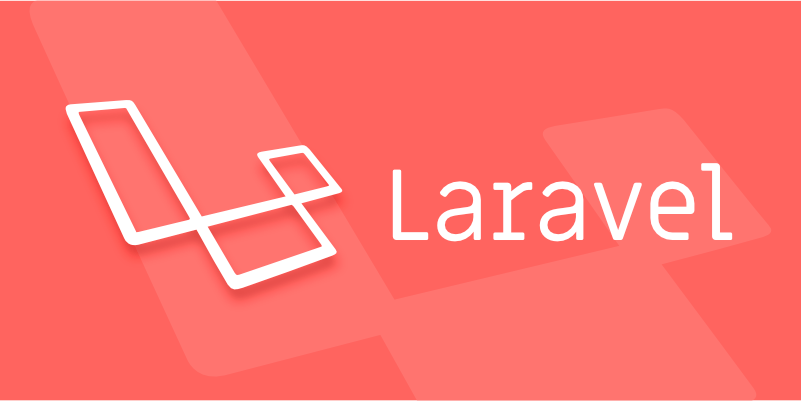To set up Laravel queues with Redis, first install and configure Redis on your server or local environment, using commands like sudo apt install redis for Ubuntu/Debian or brew install redis for macOS, then start the Redis server. Second, configure the queue driver in Laravel by setting QUEUE_CONNECTION=redis in your .env file and confirming Redis settings in config/database.php, installing Predis if necessary via composer require predis/predis. Third, adjust Redis-specific queue options in config/queue.php, such as specifying multiple queues (default, high, low) and ensuring retry_after is longer than your longest job. Fourth, launch a queue worker using php artisan queue:work --queue=default and consider running multiple workers or queues while using Supervisor for production stability. Finally, dispatch jobs normally using dispatch(new JobName($data)) or the Queue facade like Queue::push(new JobName($data)), schedule delayed jobs with Queue::later(60, new JobName($user)), and monitor queue length with redis-cli llen queues:default.

Setting up Laravel queues with Redis is a solid choice when you need fast, reliable background job processing. Redis works well as a queue driver because it’s fast and supports advanced features like atomic operations and blocking pop commands. Here’s how to do it right without getting stuck on common pitfalls.

1. Install and Configure Redis
Before Laravel can talk to Redis, you need to have Redis installed and running on your server or local environment.
-
On Ubuntu/Debian:

sudo apt update && sudo apt install redis
On macOS with Homebrew:
brew install redis redis-server
Once Redis is up, make sure to update your .env file in Laravel:

QUEUE_CONNECTION=redis REDIS_HOST=127.0.0.1 REDIS_PASSWORD=null REDIS_PORT=6379
Also, check your config/database.php to ensure the Redis settings match. Laravel uses the predis/predis package by default, so install it if it’s not already there:
composer require predis/predis
2. Configure the Queue Driver in Laravel
You don’t just set the connection to Redis and call it a day. There are a few queue-specific settings you should tweak.
In config/queue.php, find the redis connection array. You’ll see something like:
'redis' => [
'driver' => 'redis',
'connection' => 'default',
'queue' => 'default',
'retry_after' => 90,
],queueis the name of the Redis list key used to store jobs. You can have multiple queues likedefault,high,low—useful for prioritizing jobs.retry_afteris how many seconds Laravel should wait before retrying a job that’s been pulled but not completed. Make sure this is longer than your longest job.
3. Start the Queue Worker
Once Redis is running and Laravel is configured, it’s time to start processing jobs.
Run this command to start a worker listening on the Redis queue:
php artisan queue:work --queue=default
You can run multiple workers or queues by separating them with commas:
php artisan queue:work --queue=high,default,low
If you’re deploying to production, don’t forget to run the worker as a background service or use a process manager like Supervisor to keep it running.
4. Pushing Jobs to the Queue
To actually use the queue, dispatch jobs like normal. For example:
dispatch(new ProcessPodcast($podcast));
Or using the Queue facade:
Queue::push(new ProcessPodcast($podcast));
If you want to delay a job, you can:
Queue::later(60, new SendWelcomeEmail($user));
This pushes the job to Redis and schedules it to run after 60 seconds.
You can also check the queue length directly in Redis:
redis-cli llen queues:default
That’s basically it. It’s not complicated, but it’s easy to miss a config step or forget to install Predis. Once it’s working, Redis makes for a fast and scalable backend for Laravel queues.
The above is the detailed content of How to set up Laravel queues with Redis?. For more information, please follow other related articles on the PHP Chinese website!

Hot AI Tools

Undress AI Tool
Undress images for free

Undresser.AI Undress
AI-powered app for creating realistic nude photos

AI Clothes Remover
Online AI tool for removing clothes from photos.

Clothoff.io
AI clothes remover

Video Face Swap
Swap faces in any video effortlessly with our completely free AI face swap tool!

Hot Article

Hot Tools

Notepad++7.3.1
Easy-to-use and free code editor

SublimeText3 Chinese version
Chinese version, very easy to use

Zend Studio 13.0.1
Powerful PHP integrated development environment

Dreamweaver CS6
Visual web development tools

SublimeText3 Mac version
God-level code editing software (SublimeText3)
 Creating Custom Validation Rules in a Laravel Project
Jul 04, 2025 am 01:03 AM
Creating Custom Validation Rules in a Laravel Project
Jul 04, 2025 am 01:03 AM
There are three ways to add custom validation rules in Laravel: using closures, Rule classes, and form requests. 1. Use closures to be suitable for lightweight verification, such as preventing the user name "admin"; 2. Create Rule classes (such as ValidUsernameRule) to make complex logic clearer and maintainable; 3. Integrate multiple rules in form requests and centrally manage verification logic. At the same time, you can set prompts through custom messages methods or incoming error message arrays to improve flexibility and maintainability.
 Working with pivot tables in Laravel Many-to-Many relationships
Jul 07, 2025 am 01:06 AM
Working with pivot tables in Laravel Many-to-Many relationships
Jul 07, 2025 am 01:06 AM
ToworkeffectivelywithpivottablesinLaravel,firstaccesspivotdatausingwithPivot()orwithTimestamps(),thenupdateentrieswithupdateExistingPivot(),managerelationshipsviadetach()andsync(),andusecustompivotmodelswhenneeded.1.UsewithPivot()toincludespecificcol
 Sending different types of notifications with Laravel
Jul 06, 2025 am 12:52 AM
Sending different types of notifications with Laravel
Jul 06, 2025 am 12:52 AM
Laravelprovidesacleanandflexiblewaytosendnotificationsviamultiplechannelslikeemail,SMS,in-appalerts,andpushnotifications.Youdefinenotificationchannelsinthevia()methodofanotificationclass,andimplementspecificmethodsliketoMail(),toDatabase(),ortoVonage
 Understanding Dependency Injection in Laravel?
Jul 05, 2025 am 02:01 AM
Understanding Dependency Injection in Laravel?
Jul 05, 2025 am 02:01 AM
Dependency injection automatically handles class dependencies through service containers in Laravel without manual new objects. Its core is constructor injection and method injection, such as automatically passing in the Request instance in the controller. Laravel parses dependencies through type prompts and recursively creates the required objects. The binding interface and implementation can be used by the service provider to use the bind method, or singleton to bind a singleton. When using it, you need to ensure type prompts, avoid constructor complications, use context bindings with caution, and understand automatic parsing rules. Mastering these can improve code flexibility and maintenance.
 Strategies for optimizing Laravel application performance
Jul 09, 2025 am 03:00 AM
Strategies for optimizing Laravel application performance
Jul 09, 2025 am 03:00 AM
Laravel performance optimization can improve application efficiency through four core directions. 1. Use the cache mechanism to reduce duplicate queries, store infrequently changing data through Cache::remember() and other methods to reduce database access frequency; 2. Optimize database from the model to query statements, avoid N 1 queries, specifying field queries, adding indexes, paging processing and reading and writing separation, and reduce bottlenecks; 3. Use time-consuming operations such as email sending and file exporting to queue asynchronous processing, use Supervisor to manage workers and set up retry mechanisms; 4. Use middleware and service providers reasonably to avoid complex logic and unnecessary initialization code, and delay loading of services to improve startup efficiency.
 Managing database state for testing in Laravel
Jul 13, 2025 am 03:08 AM
Managing database state for testing in Laravel
Jul 13, 2025 am 03:08 AM
Methods to manage database state in Laravel tests include using RefreshDatabase, selective seeding of data, careful use of transactions, and manual cleaning if necessary. 1. Use RefreshDatabasetrait to automatically migrate the database structure to ensure that each test is based on a clean database; 2. Use specific seeds to fill the necessary data and generate dynamic data in combination with the model factory; 3. Use DatabaseTransactionstrait to roll back the test changes, but pay attention to its limitations; 4. Manually truncate the table or reseed the database when it cannot be automatically cleaned. These methods are flexibly selected according to the type of test and environment to ensure the reliability and efficiency of the test.
 Choosing between Laravel Sanctum and Passport for API authentication
Jul 14, 2025 am 02:35 AM
Choosing between Laravel Sanctum and Passport for API authentication
Jul 14, 2025 am 02:35 AM
LaravelSanctum is suitable for simple, lightweight API certifications such as SPA or mobile applications, while Passport is suitable for scenarios where full OAuth2 functionality is required. 1. Sanctum provides token-based authentication, suitable for first-party clients; 2. Passport supports complex processes such as authorization codes and client credentials, suitable for third-party developers to access; 3. Sanctum installation and configuration are simpler and maintenance costs are low; 4. Passport functions are comprehensive but configuration is complex, suitable for platforms that require fine permission control. When selecting, you should determine whether the OAuth2 feature is required based on the project requirements.
 Implementing Database Transactions in Laravel?
Jul 08, 2025 am 01:02 AM
Implementing Database Transactions in Laravel?
Jul 08, 2025 am 01:02 AM
Laravel simplifies database transaction processing with built-in support. 1. Use the DB::transaction() method to automatically commit or rollback operations to ensure data integrity; 2. Support nested transactions and implement them through savepoints, but it is usually recommended to use a single transaction wrapper to avoid complexity; 3. Provide manual control methods such as beginTransaction(), commit() and rollBack(), suitable for scenarios that require more flexible processing; 4. Best practices include keeping transactions short, only using them when necessary, testing failures, and recording rollback information. Rationally choosing transaction management methods can help improve application reliability and performance.







